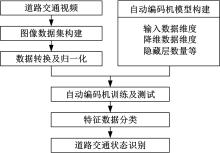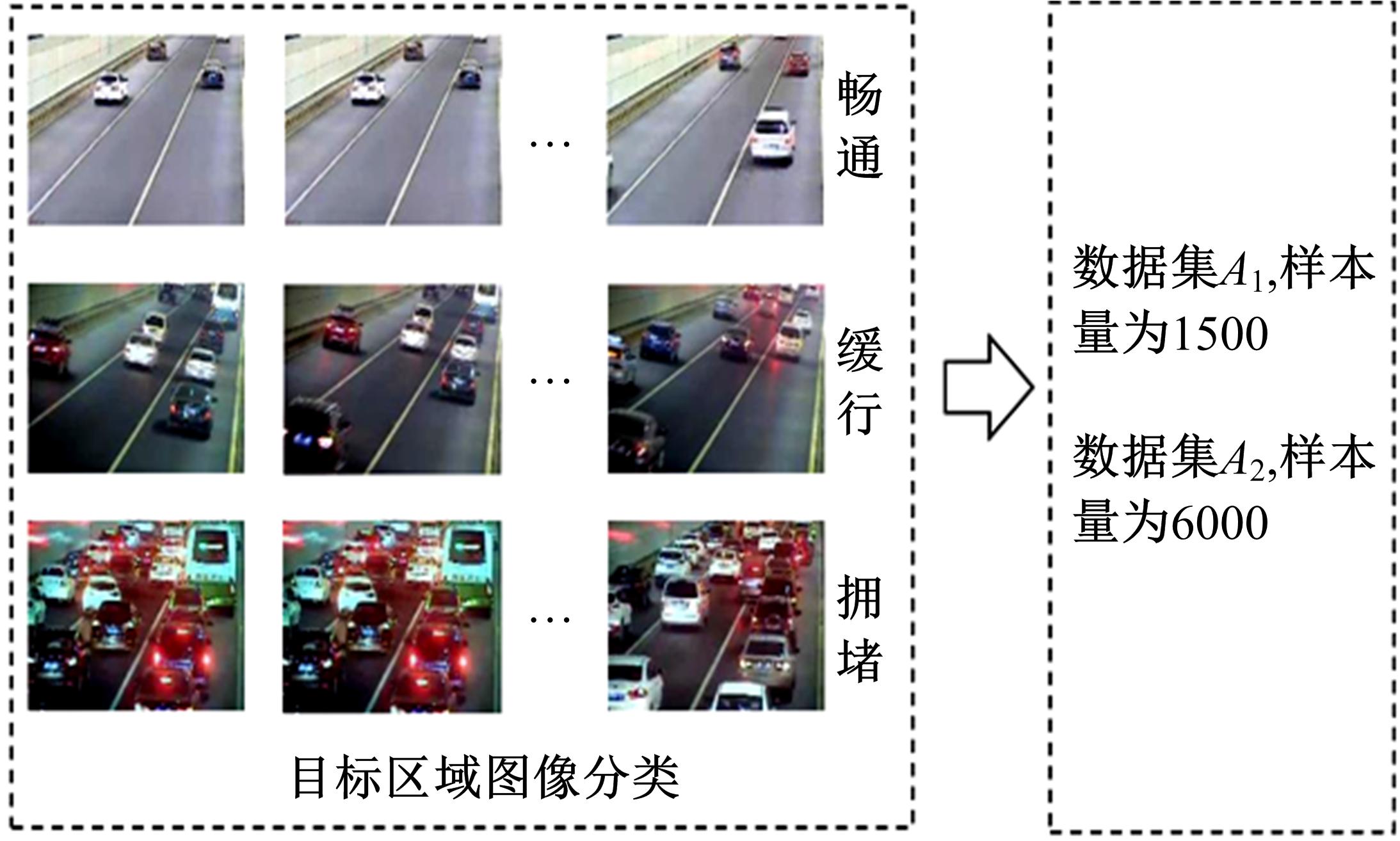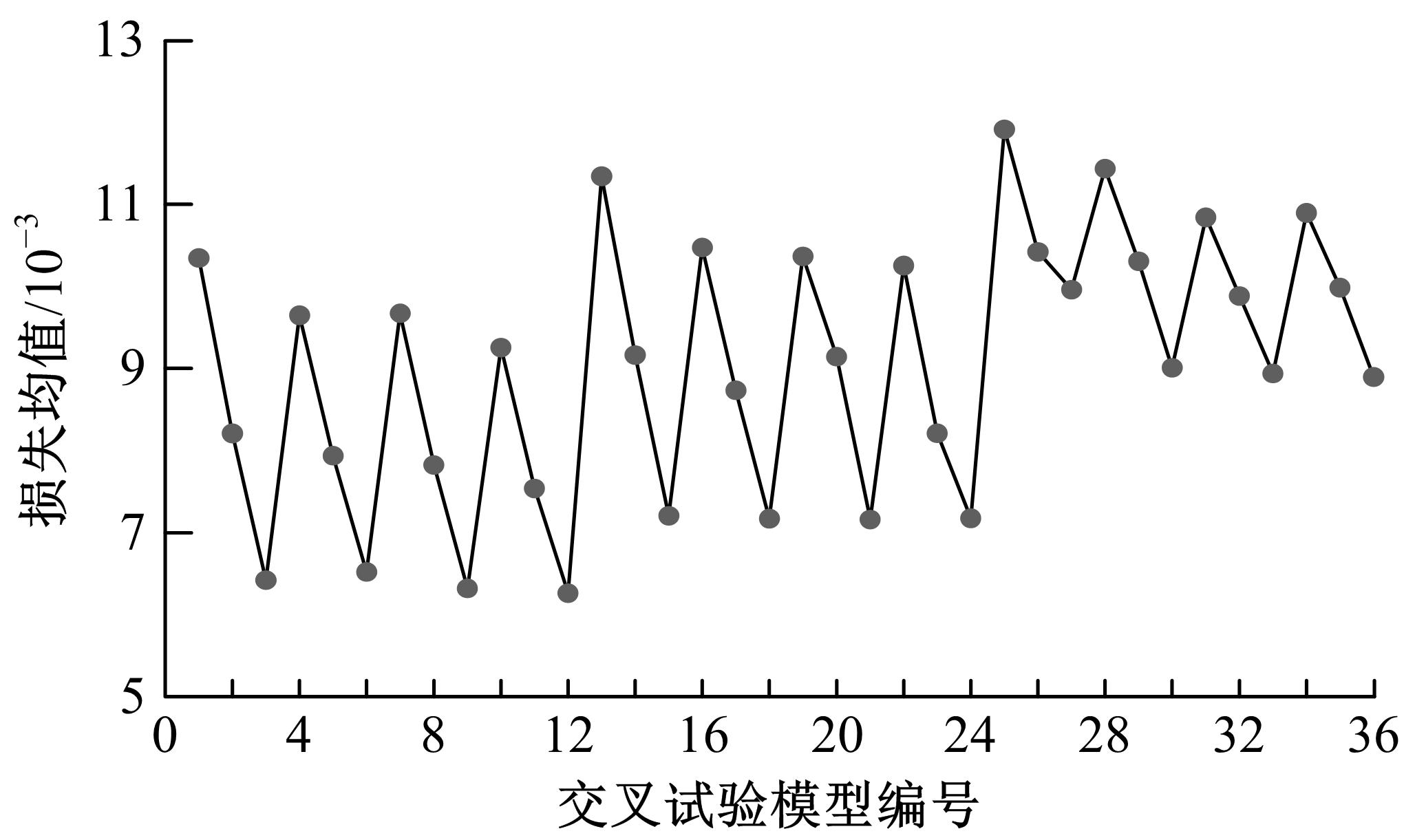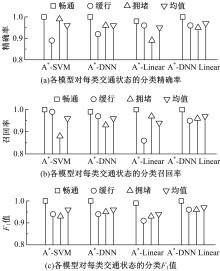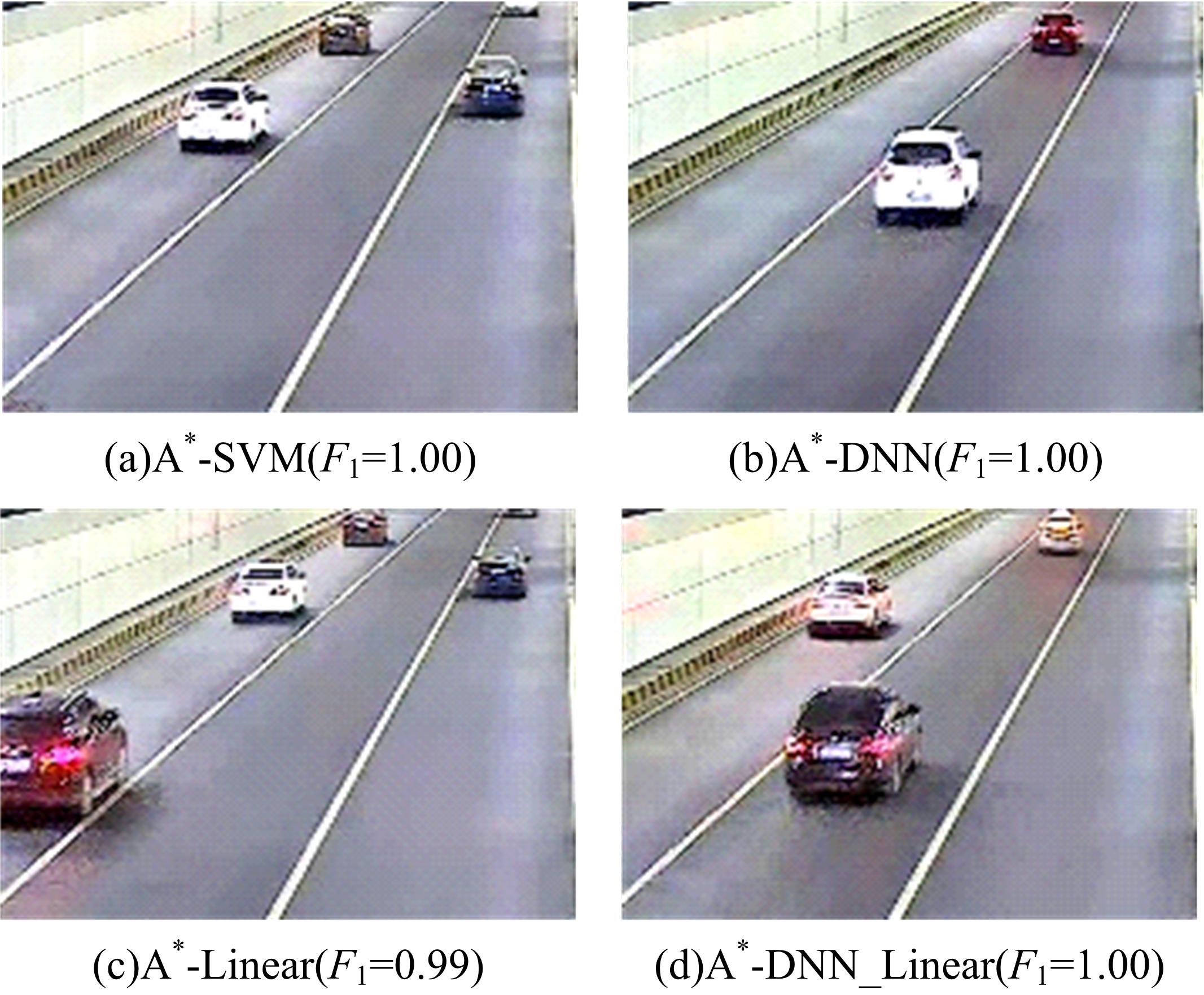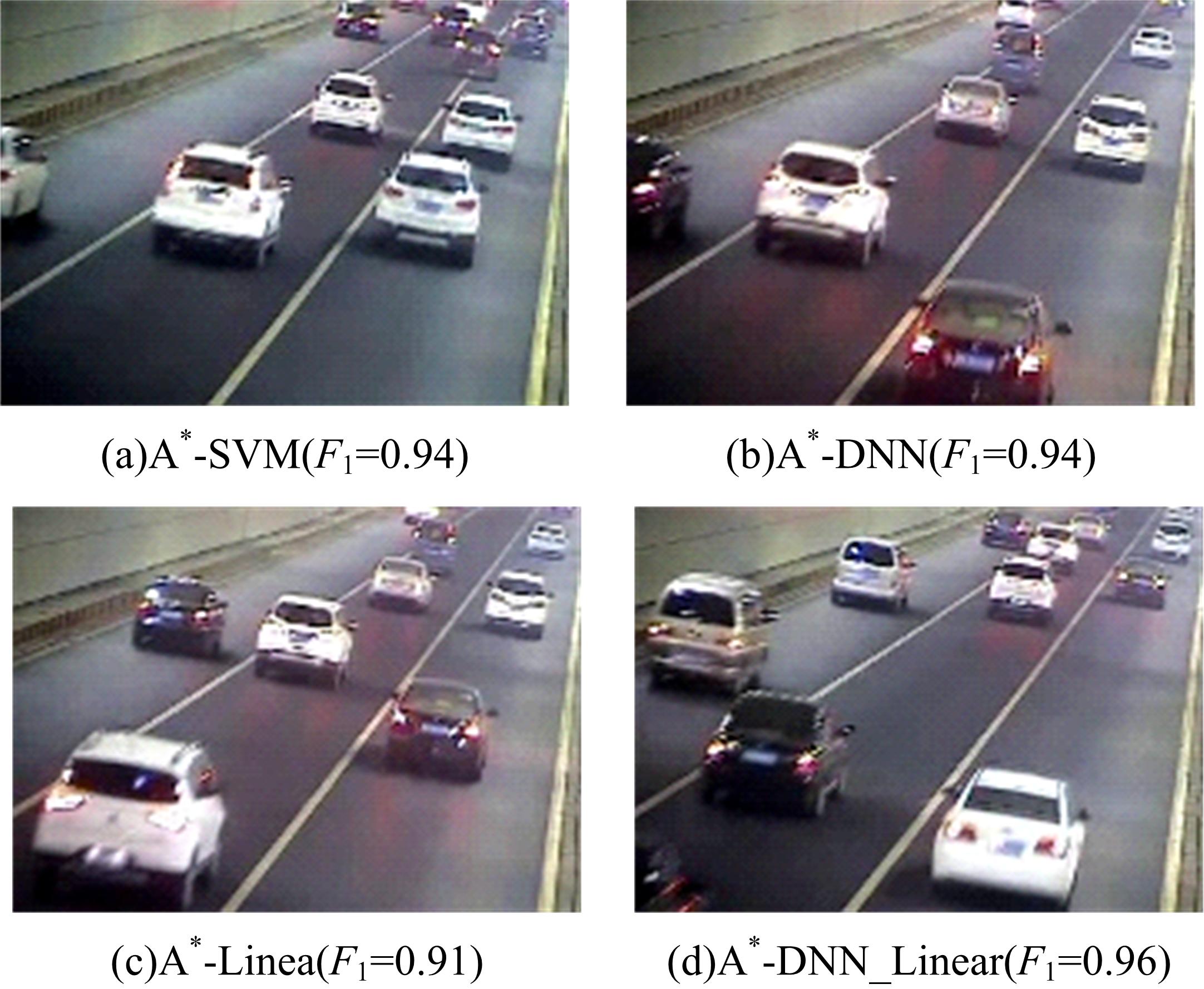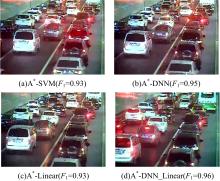Journal of Jilin University(Engineering and Technology Edition) ›› 2021, Vol. 51 ›› Issue (3): 886-892.doi: 10.13229/j.cnki.jdxbgxb20200039
Previous Articles Next Articles
Automatic traffic state recognition from videos based on auto⁃encoder and classifiers
Bo PENG1,2( ),Yuan-yuan ZHANG2,Yu-ting WANG2,Ju TANG2,Ji-ming XIE2
),Yuan-yuan ZHANG2,Yu-ting WANG2,Ju TANG2,Ji-ming XIE2
- 1.Chongqing Key Lab of Traffic System & Safety in Mountain Cities,Chongqing Jiaotong University,Chongqing 400074,China
2.College of Traffic and Transportation,Chongqing Jiaotong University,Chongqing 400074,China
CLC Number:
- U491.1
| 1 | Li L, Hu J, Huang Q, et al. A fuzzy hidden Markov model for traffic status classification based on video features[C]∥IEEE Conference on Computational Engineering in Systems Applications, Beijing, China, 2006: 2050-2055. |
| 2 | Quiros A R F, Bedruz R A, Uy A C, et al. Machine vision of traffic state estimation using fuzzy logic[C]∥IEEE Region 10 Conference, Marina Bay Sands, Singapore, 2016: 2104-2109. |
| 3 | 崔华, 袁超, 魏泽发, 等. 利用FCM对静态图像进行交通状态识别[J]. 西安电子科技大学学报:自然科学版, 2017, 44(6): 85-90. |
| Cui Hua, Yuan Chao, Wei Ze-fa, et al. Traffic state recognition using state images and FCM[J]. Journal of Xidian University(Natural Science Edition), 2017, 44(6): 85-90. | |
| 4 | Krizhevsky A, Sutskever I, Hinton G E. ImageNet classification with deep convolutional neural networks[J]. Advances in Neural Information Processing Systems, 2012, 25(2): 1097-1105. |
| 5 | Ostrom Q T, Bauchet L, Davis F G, et al. The epidemiology of gliomain in adults: a "state of the science" review[J]. Neuro-Oncology, 2014, 16(7): 896-913. |
| 6 | Szegedy C, Liu W, Jia Y, et al. Going deeper with convolutions[C]∥IEEE Conference on Computer Vision and Pattern Recognition(CVPR), Boston, USA, 2015: 1-9. |
| 7 | 李映, 龚红丽, 梁佳熙, 等. 基于KSVD和PCA的SAR图像目标特征提取[J]. 吉林大学学报:工学版, 2010, 40(5): 1336-1339. |
| Li Ying, Gong Hong-li, Liang Jia-xi, et al. SAR image target feature extraction based on KSVD and PCA[J]. Journal of Jilin University(Engineering and Technology Edition), 2010, 40(5): 1336-1339. | |
| 8 | 侯阿临, 廖庆, 靳志娟, 等. 计算全息图的人工神经网络压缩算法[J]. 吉林大学学报:工学版, 2013, 43(): 21-24. |
| Hou A-lin, Liao Qing, Jin Zhi-juan, et al. Compression algorithm of computer-generated hologram based on artificial neural network[J]. Journal of Jilin University(Engineering and Technology Edition), 2013, 43(Sup.1): 21-24. | |
| 9 | Gao S, Zhang Y, Jia K, et al. Single sample face recognition via learning deep supervised autoencoders[J]. IEEE Transactions on Information Forensics and Security, 2015, 10(10): 2108-2118. |
| 10 | Zhao C, Wan X, Zhao G, et al. Spectral-spatial classification of hyperspectral imagery based on stacked sparse autoencoder and random forest[J]. European Journal of Remote Sensing, 2017, 50(1): 47-63. |
| 11 | Ge P, Ren C X, Dai D Q, et al. Dual adversarial autoencoders for clustering[J]. IEEE Transactions on Neural Networks and Learning Systems, 2020, 31(4): 1417-1424. |
| 12 | Cheng H, Koc L, Harmsen J, et al. Wide & deep learning for recommender systems[C]∥Conference on Recommender Systems, New York, USA, 2016: 7-10. |
| [1] | Zhen SONG,Jun-liang LI,Gui-qiang LIU. Constant flow prediction method of variable speed hydraulic power source based on deep learning and limitation fuzzy [J]. Journal of Jilin University(Engineering and Technology Edition), 2021, 51(3): 1106-1110. |
| [2] | Zhe-ming YUAN,Hong-jie YUAN,Yu-xuan YAN,Qian LI,Shuang-qing LIU,Si-qiao TAN. Automatic recognition and classification of field insects based on lightweight deep learning model [J]. Journal of Jilin University(Engineering and Technology Edition), 2021, 51(3): 1131-1139. |
| [3] | Jin-qing LI,Jian ZHOU,Xiao-qiang DI. Learning optical image encryption scheme based on CycleGAN [J]. Journal of Jilin University(Engineering and Technology Edition), 2021, 51(3): 1060-1066. |
| [4] | Dian-hai WANG,Xin-yi SHEN,Xiao-qin LUO,Sheng JIN. Offset optimization with minimum average vehicle delay [J]. Journal of Jilin University(Engineering and Technology Edition), 2021, 51(2): 511-523. |
| [5] | Hua CHEN,Wei GUO,Jing-wen YAN,Wen-hao ZHUO,Liang-bin WU. A new deep learning method for roads recognition from SAR images [J]. Journal of Jilin University(Engineering and Technology Edition), 2020, 50(5): 1778-1787. |
| [6] | Xian-min SONG,Ming-ye ZHANG,Zhen-jian LI,Xin WANG,Ya-nan ZHANG. Setting of dynamic bus lane and its simulation analysis and evaluation [J]. Journal of Jilin University(Engineering and Technology Edition), 2020, 50(5): 1677-1686. |
| [7] | Hong-wei ZHAO,Xiao-han LIU,Yuan ZHANG,Li-li FAN,Man-li LONG,Xue-bai ZANG. Clothing classification algorithm based on landmark attention and channel attention [J]. Journal of Jilin University(Engineering and Technology Edition), 2020, 50(5): 1765-1770. |
| [8] | Hong-fei JIA,Xin-ru DING,Li-li YANG. Bi-level programming model for optimization design of tidal lane [J]. Journal of Jilin University(Engineering and Technology Edition), 2020, 50(2): 535-542. |
| [9] | Chao-ying YIN,Chun-fu SHAO,Xiao-quan WANG,Zhi-hua XIONG. Influence of built environment on commuting mode choice considering spatial heterogeneity [J]. Journal of Jilin University(Engineering and Technology Edition), 2020, 50(2): 543-548. |
| [10] | Da-wei ZHANG,Hai-tao ZHU. An optimization⁃based evacuation model considering pedestrian heterogeneity [J]. Journal of Jilin University(Engineering and Technology Edition), 2020, 50(2): 549-556. |
| [11] | Yuan-li GU, Yuan ZHANG, Xiao-ping RUI, Wen-qi LU, Meng LI, Shuo WANG. Short⁃term traffic flow prediction based on LSSVMoptimized by immune algorithm [J]. Journal of Jilin University(Engineering and Technology Edition), 2019, 49(6): 1852-1857. |
| [12] | Yi-ming BIE,Kai JIANG,Ru-ru TANG,Lin-hong WANG,Xin-yu XIONG. Time of interval partition for traffic control at isolated intersection considering impacts of plan transition [J]. Journal of Jilin University(Engineering and Technology Edition), 2019, 49(6): 1844-1851. |
| [13] | Guo-zhu CHENG, Si-he FENG, Tian-jun FENG. Setting condition of on⁃street parking space occupied vehicle lane [J]. Journal of Jilin University(Engineering and Technology Edition), 2019, 49(6): 1858-1864. |
| [14] | Quan LIANG,Jian-cheng WENG,Wei ZHOU,Jian RONG. Stability identification of public transport commute passengers based on association rules [J]. Journal of Jilin University(Engineering and Technology Edition), 2019, 49(5): 1484-1491. |
| [15] | Qian XU,Ying LI,Gang WANG. Pedestrian-vehicle detection based on deep learning [J]. Journal of Jilin University(Engineering and Technology Edition), 2019, 49(5): 1661-1667. |
|
||
